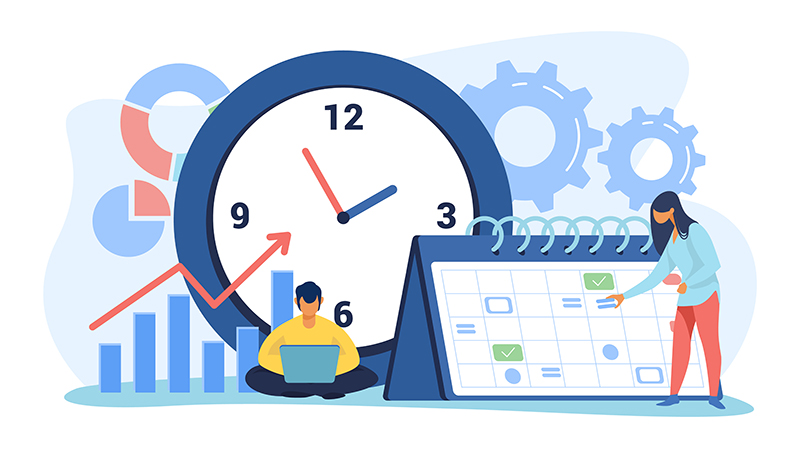Dealing with HR Compliance like a Pro!
The need of becoming professional and knowledgeable HR is growing more and more important as businesses attempt to become more efficient and productive. Any organization that wants to be successful in the long run should engage its faculty and try to resolve any concerns. Not to add, they should endeavor to remedy the problem as quickly as possible; else it will hurt the business. As a corollary, HR compliance is an important factor. Before we read about the HR compliance issues, its importance and role of HR compliance specialist, let us first know what HR compliance signifies.
What exactly does HR Compliance imply?
HR compliance refers to a company’s commitment to comply with the employment law’s operating requirements. This has an impact on the systems, policies, and documentation. It also means that employees are entitled to all benefits stipulated in their employment contracts.
Regardless of where they are located, all institutions must adhere to employment legislation, norms, and regulations. To do this, HR must take a proactive approach to ensure that the system complies with all regulatory requirements. This entails overseeing all health and safety laws daily.
HR compliance ensures that employees receive their contractual and statutory employment benefits. This also involves fair recruitment rules, anticipating and addressing workplace prejudice, and ensuring that employees are paid what they are due. HR compliance requires keeping up with any changes in employment laws, gender pay reporting, and requirements for hiring international personnel.
Importance of HR in Compliance
What is the significance of HR compliance? HR compliance is critical since ignoring legal requirements is either illegal or unethical. Not to mention, this can lead to labor disputes or tribunal claims. Allowing a worker to work during the first week following childbirth is deemed a criminal law violation in some situations.
However, ensuring that all of an organization’s legal obligations are met can be difficult. To achieve compliance, HR must be properly resourced to fully comprehend the organization’s duties and be able to identify areas where additional action and/or skills are needed.
Furthermore, in the highly regulated world of human resources, it’s easy to feel overwhelmed by the numerous compliance reports and laws. It is critical to follow all HR regulations, as failure to do so could result in severe penalties and repercussions for an organization. As a result, HR compliance is more crucial than ever.
The following are a few of the perks of HR compliance:
- First and foremost, it ensures that the company complies with the Labor Standards Act’s standards, which govern overtime compensation and the minimum salary for most professions.
- Second, this ensures that the company or its employment practices aren’t the subjects of pending litigation.
- As a result, it ensures that the company administers benefit programs and compensation effectively, even though compensation laws are continually changing.
- Finally, through an interactive model, this assists employers in understanding and meeting compliance duties. Execution on time; audit trails; and automated notification
HR compliance issues
Every day, employers face issues, some of which, if not managed effectively, might have a substantial impact on their organization. These issues are frequently lumped within the compliance category for HR and benefits professionals.
At MKT Software, we catch pace with compliance and regulatory developments so that our clientele and business professionals are aware, equipped, and able to deal with any challenges that occur as a result of changes in laws and regulations. Here are some of the most important HR compliance issues to keep in mind.
1. The Fair Labor Standards Act (FLSA)
The Fair Labor Standards Act (FLSA) is a federal law that protects workers from (FLSA). This law requires employers and employees to pay a minimum salary, work beyond, and are over the age of 18. Employers, HR professionals, and benefits professionals must all comprehend the complexities of this regulation.
Creating a payroll or record-keeping error has consequences for the employee, but it can also impact you, the company, in lawsuit penalties.
2. Laws Governing Maternity Leave
The FMLA (Family and Medical Leave Act) is a federal law that permits eligible employees to undertake up to 12 weeks of leave without pay each year without fear of the consequences. While the FMLA is most often linked with maternity leave, it also extends to employees who have serious medical issues.
3. Workplace Bullying
Workplace discrimination can be tough to manage even for the most experienced HR and benefits professionals. HR directors must traverse the arena not only for their employee’s safety and well-being, but also to ensure compliance with legal and regulatory norms. Several states are working to increase workplace compliance and awareness.
A lot of jurisdictions now require harassment prevention training at work to promote compliance and knowledge within the workforce.
4. Workplace health and safety
There is still a lot of discussion about health and wellness programs in the workplace. It’s particularly evident in contemporary multi-generational employment, where salary and compensation expectations are progressive including health and wellness perks.
List of HR Compliance
The existing legal environment is characterized by uncertainty. In most circumstances, a law is only discovered after it has been broken, resulting in harsh penalties. Compliance Management is necessary if you want to stay out of trouble with the law.
Here’s an overview of the most important HR legal obligations;
- The 1923 Workmen’s Compensation Act,
- The 1926 Trade Unions Act,
- The 1936 Payment Of Wages Act,
- The 1946 Industrial Disputes Act,
- The 1946 Industrial Employment Standing Orders Act,
- The 1948 Minimum Wages Act,
- The 1948 Factories Act,
- The 1948 Employees’ State Insurance Act,
- The 1952 Employees Provident Fund & Miscellaneous Provisions Act,
- The 1959 Employment Exchanges(Compulsory Notification Of Vacancies) Act,
- The 1961 Apprentices Act,
- The 1965 Payment Of Bonus Act,
- The 1970 Contract Labor (Regulation & Abolition) Act,
- The 1972 Payment Of Gratuity Act,
- The 1976 Equal Remuneration Act,
- 1979 Inter-State Migrant Workmen (Regulation of Employment & conditions of service) Act,
- The 1986 Child Labor (Prohibition & Regulation Act),
Each of these must be submitted at different times during the year and in diverse types.
Who is now in charge of maintaining HR compliance?
An HR Compliance Specialist’s job is to guide, strategize, and implement policies and schemes to meet compliance requirements. He or she is responsible for monitoring and running the organization’s wellness programs, as well as supervising and managing safety and health programs in compliance with existing corporate policies and any regulatory restrictions.
An HR compliance specialist’s job includes developing and implementing methods and strategies (training, policy memorandums, etc.) for informing employees about the Company’s health and safety programs, expectations, and obligations that relate to their responsive employment. It also comprises giving employees with compliance training and advice on topics including accidents, injuries, illness, leaves of absence, and return to work after a leave of absence.
Employee leave notices and requests are also handled by HR compliance professionals, who also interact with them as needed. They also ensure that proper leave of absence documentation is generated, obtained, and kept under legal standards.
Prior to actually authorizing a return to work following medical leaves of absence, they conduct an assessment based on the data received from health care providers, the department’s ability to supply special adjustments and/or comply with productivity constraints, understanding of associated physical and mental specifications for performing essential job responsibilities, and relevant law constraints.
Before employing an employee, an HR compliance specialist must conduct a background check (including checks of motor vehicle records and criminal history) under the Fair Credit Reporting Act (FCRA).
They also aid in the investigation of work-related accidents, injuries, illnesses, and “near misses” to determine the core causes and patterns, as well as to offer remedial actions or policy and procedure modifications to avoid recurrence. Anti-discrimination regulations, wage and hour legislation, family and medical leave, and Child Labor Regulations (CLR) are all things that an HR Compliance Officer should be aware of.
Conclusion
It is not an option, but rather an obligation, to follow the numerous HR regulations. Nonetheless, how you handle compliance issues will determine your company’s fate. Even when you take the correct procedures, avoiding compliance concerns that drain your HR department’s productivity can be difficult. As a result, collaborating with a payroll software supplier such as People Choice HRMS is one of the greatest ways to eliminate distractions and streamline HR compliance procedures.










